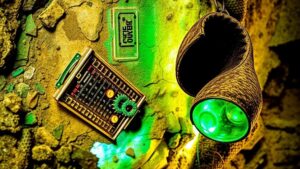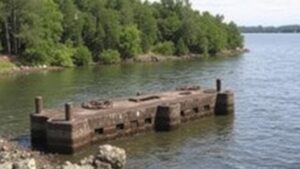How to Access LiDAR Data for Detecting Buried Structures and Rich Sites
How to Access LiDAR Data for Detecting Buried Structures and Rich Sites
Light Detection and Ranging (LiDAR) technology has emerged as a leading tool for detecting buried structures and rich archaeological sites. Its ability to penetrate vegetation and provide detailed three-dimensional representations of the Earths surface makes it invaluable in various fields, including archaeology, geology, and urban planning. This article will explore methods for accessing LiDAR data, discuss its applications in detecting buried structures, and highlight case studies demonstrating its efficacy.
Understanding LiDAR Technology
LiDAR employs laser light to measure distances to the Earths surface. A LiDAR system typically consists of a laser, a scanner, and a specialized GPS receiver. As the LiDAR-equipped aircraft flies over the area, the system emits thousands of laser pulses per second, which bounce back to the sensor after hitting the ground or any structure. This allows for the creation of precise, three-dimensional models.
Sources for Accessing LiDAR Data
Accessing LiDAR data can be achieved through various government agencies, research institutions, and online platforms. Below are primary sources where this data can be found.
- USGS Earth Explorer: The United States Geological Survey provides access to LiDAR data through the Earth Explorer platform. Researchers can filters for specific criteria, including location and data type.
- OpenTopography: This platform focuses primarily on topographic data and serves as a hub for sharing high-resolution LiDAR datasets. It offers tools for querying and visualizing the data.
- National Oceanic and Atmospheric Administration (NOAA): NOAA provides LiDAR datasets primarily for coastal regions, including bathymetric LiDAR data, useful for marine archaeology.
- Local and State Agencies: Many states maintain their own geospatial data portals where local LiDAR data may be available. Check with local geological and historical agencies for specific datasets.
Steps to Access LiDAR Data
To effectively access LiDAR data, researchers should follow these systematic steps:
- Define Your Area of Interest: Use geographical coordinates to establish your research region, making it easier to search for specific LiDAR datasets.
- Select Data Source: Choose one of the mentioned resources based on data relevance and availability in your area of interest.
- Use Appropriate Search Filters: Employ filters such as date, point cloud density, and data type to narrow down your search results efficiently.
- Download and Process Data: Once the appropriate datasets are identified, they can usually be downloaded in various formats suitable for analysis (commonly LAS/LAZ formats).
Applications in Archaeology and Buried Structure Detection
LiDAR has significant implications in uncovering buried structures and archaeological sites. For example, research has demonstrated its ability to identify ancient Mayan cities in the jungles of Guatemala, where conventional survey methods proved inadequate due to dense vegetation. A notable study conducted by the Pacunam LiDAR Initiative (2018) resulted in the discovery of thousands of previously unknown structures, altering perceptions of Mayan civilization size and complexity.
Plus, LiDAR data has been utilized in Delphi, Greece, where researchers identified hidden archaeological features beneath forest cover. implementation of LiDAR helped detect ancient road systems and urban layouts that were not visible on traditional maps.
Challenges and Limitations
While LiDAR is a powerful tool, certain challenges should be considered:
- Data Quality and Resolution: The effectiveness of LiDAR can vary based on the density of point clouds and the quality of the data collected. Low-resolution data may miss smaller features.
- Complex Terrain Interpretation: In areas with intricate topography or heavy vegetation, data interpretation might yield ambiguities.
- Cost of Data Acquisition: High-quality LiDAR surveys can be expensive, potentially limiting access for smaller research projects.
Actionable Takeaways
Accessing LiDAR data is an essential step for researchers aiming to detect buried structures and rich archaeological sites effectively. The use of accessible platforms such as USGS Earth Explorer and OpenTopography ensures that researchers can obtain the necessary data to support their studies. Understanding the capabilities and limitations of LiDAR technology can empower researchers to utilize this innovative tool to uncover historical sites and structures previously lost to time.
Overall, as technology progresses, the accessibility and quality of LiDAR data are expected to improve, further benefiting archaeological research and heritage preservation efforts.



